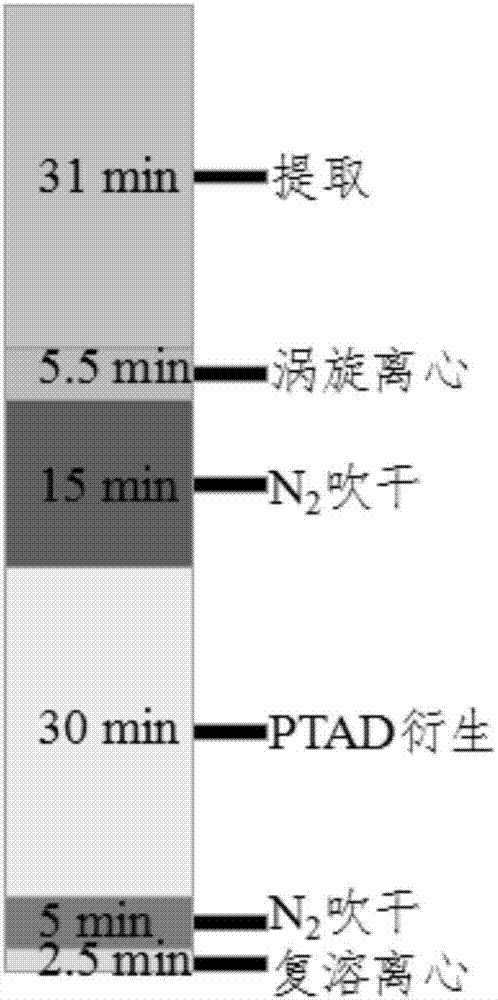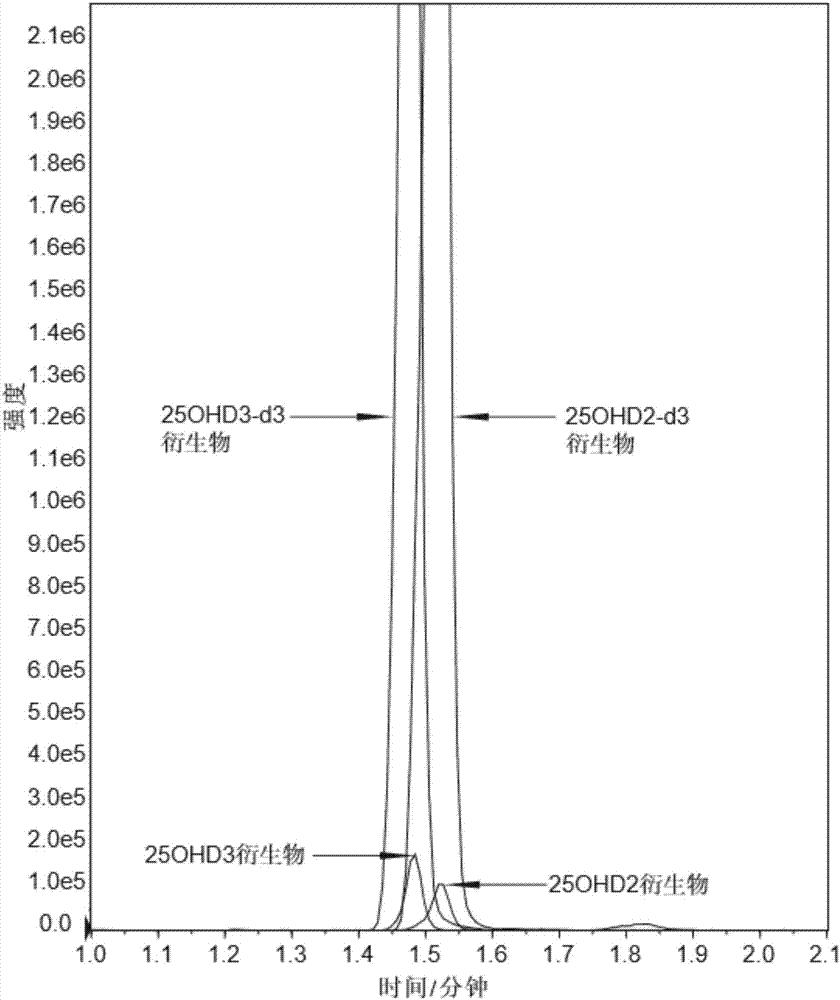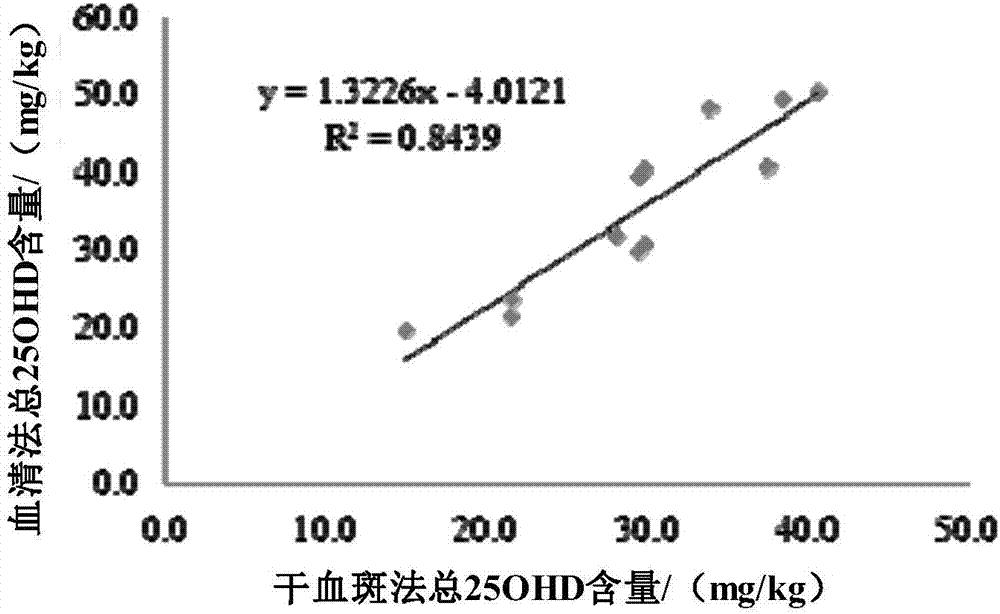Detection method of content of vitamin D in dried blood spot
A detection method and a technology for dried blood spots, applied in the field of chemical analysis, can solve the problems of inability to distinguish vitamin D2 and vitamin D3, inconvenient detection, long analysis time, etc., and achieve shortened extraction time, shortened detection time, and less blood consumption. Effect
- Summary
- Abstract
- Description
- Claims
- Application Information
AI Technical Summary
Problems solved by technology
Method used
Image
Examples
Embodiment 1
[0051] I. Preparation of dried blood spot samples:
[0052] (1) Preparation of dried blood spot calibration curve samples: add a series of 25-hydroxyvitamin D2 and 25-hydroxyvitamin D3 standard solutions to whole blood, dilute 10 times, so that the final concentrations of the two 25OHDs are 5, 10, 25, 50, 100ng / mL, take 50μL of blood of each concentration and the corresponding unspiked whole blood, drip onto filter paper, dry it, and store it at -20°C.
[0053] (2) Preparation of dried blood spot samples to be tested: puncture the skin at the fingertip or heel with a blood collection needle, apply the blood on the blood collection filter paper, dry at room temperature overnight, and put it in a sealed bag containing a desiccant at -20°C save.
[0054] (3) Preparation of quality control dried blood spots: Add 18 μL and 35 μL of 1 μg / mL 25OHD2 and 25OHD3 mixed standards to 1 mL of whole blood respectively, so that the final concentration of both 25OHDs is 17.7 ng / mL (Q1) , 33....
Embodiment 2
[0069] The difference between this example and Example 1 is that in the pretreatment of dried blood spot samples, the supernatant transferred to the 96-well plate in step (1) is 250 μL, and 50 μL containing 0.1 mg / Ethyl acetate of mL PTAD, room temperature 60min; When using high performance liquid chromatography tandem mass spectrometry, take step (2) and use 50 μ L of 40% acetonitrile aqueous solution to redissolve, 25 μ L of sample detection, the formic acid buffer added in acetonitrile and water Proportion is 0.2%, except that, all the other conditions are identical with embodiment 1.
Embodiment 3
[0071] In this example, in order to evaluate the accuracy of the dried blood spot detection method in Example 1, a recovery rate test of standard addition was carried out, and the specific method is as follows:
[0072] According to the dry blood spot pretreatment method, the dried blood spot samples with known 25OHD2 and 25OHD3 spiked concentrations of 12.5, 25, and 100 ng / mL were processed. Each concentration was repeated six times in parallel, and each parallel was tested with one needle to complete the addition. Standard recovery rate test (standard addition recovery rate should meet 80%-120%), Table 3 is the average recovery rate of three concentrations of two kinds of 25OHD.
[0073] Table 3 Added recovery results
[0074]
[0075]
PUM
| Property | Measurement | Unit |
|---|---|---|
| Diameter | aaaaa | aaaaa |
| Concentration | aaaaa | aaaaa |
Abstract
Description
Claims
Application Information
 Login to View More
Login to View More - R&D
- Intellectual Property
- Life Sciences
- Materials
- Tech Scout
- Unparalleled Data Quality
- Higher Quality Content
- 60% Fewer Hallucinations
Browse by: Latest US Patents, China's latest patents, Technical Efficacy Thesaurus, Application Domain, Technology Topic, Popular Technical Reports.
© 2025 PatSnap. All rights reserved.Legal|Privacy policy|Modern Slavery Act Transparency Statement|Sitemap|About US| Contact US: help@patsnap.com



